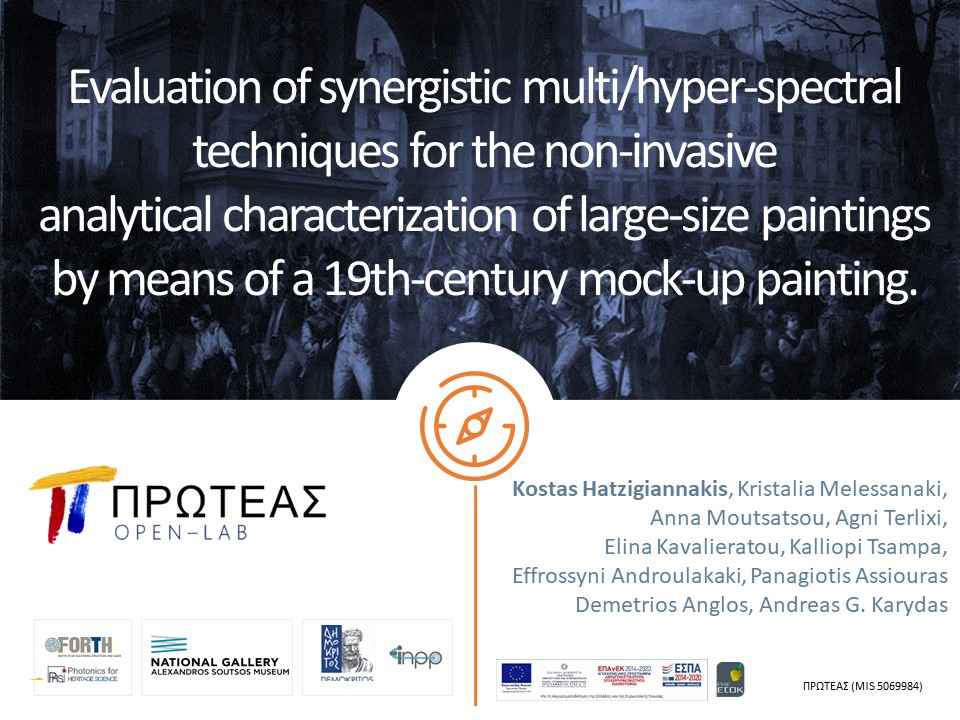Oral presentation at the TECHNART 2023 in LISBON
Our work “Evaluation of synergistic multi/hyper-spectral techniques for the non-invasive analytical characterization of large-size paintings by means of a 19th-century mock-up painting” has been recently presented in the TECHNART 2023 (Lisbon 7-12 May): International conference on analytical techniques in art and cultural heritage by Kostas Hatzigiannakis.
This work, also co-authored by Kristalia Melessanaki, Anna Moutsatsou, Agni Terlixi, Elina Kavalieratou, Kalliopi Tsampa, Effrossyni Androulakaki, Panagiotis Assiouras, Demetrios Anglos and Andreas G. Karydas, reflects research performed between @PhoHS of IESL-FORTH, in collaboration with the National Gallery of Athens and INPP- NCSR Demokritos in the framework of the PROTEAS (Advanced system for collection and management of analytical data for documentation and conservation of large-scale paintings in an open laboratory) project.

In this talk, the goals of the PROTEAS project were briefly presented, but the focus was made on the methodology that was followed for the development of a mock-up painting, constructed with materials and methods used in the 19th century, to be used as a benchmark for the evaluation of the analytical tools employed within the framework of the PROTEAS project, namely MA-XRF, HSI, SWIR and LED-IF imaging. The need to simulate the 19th-century construction techniques sources from the fact that the main case study of PROTEAS, is a large size (8.45×4.45m) masterpiece of the French painter C. L. L. Muller, named “March 30, 1814“ which was created within that period and belongs to the collection of the National Gallery – Alexandros Soutsos Museum. Next to the application of the spectroscopic and imaging techniques on the mock-up, the obtained multi-dimensional data were post-processed and cross-correlated and the performance of PROTEAS analytical tools was evaluated and discussed in terms of spectral response, throughput, analytical sensitivity, and spatial resolution.


